Wooden Jharokhas: Unlocking the Timeless Charm of Traditional Indian Window Artistry
Wooden jharokha, with their intricate designs and timeless appeal, stand as a symbol of India’s rich cultural heritage. These traditional windows have adorned homes and palaces for centuries, showcasing the craftsmanship and artistry passed down through generations. In this SEO-friendly blog, we will explore the history, craftsmanship, cultural significance, and modern relevance of wooden jharokhas, offering insights for those looking to incorporate this unique element into their homes.
The History and Origins of Wooden Jharokha : jharokha wooden frame
Wooden jharokhas find their roots deeply embedded in the history of Indian architecture. The term “jharokha” is derived from the Sanskrit word “jhar,” meaning to ‘flow.’ These ornate windows originated during the Mughal era and reached their pinnacle during the Rajput and Marwari architectural periods.
1.1 Mughal Influence on Jharokhas
The Mughals, known for their love of art and architecture, introduced the concept of jharokhas as a way to provide privacy to the royal women while allowing them to observe the outside world. This architectural innovation soon became a hallmark of Mughal palaces and forts.
1.2 Rajput and Marwari Jharokhas : jharokha with mirror
With time, the Rajput and Marwari communities further embellished and diversified the designs of jharokhas. jharokha wooden frame , Intricate carvings, vibrant colors, and symbolic motifs became characteristic elements, turning jharokhas into more than functional windows – they became works of art.
The Artistry Behind Wooden Jharokhas
2.1 Traditional Craftsmanship Techniques : jharokha with mirror
Crafting a wooden jharokha requires a high level of skill and precision. Artisans employ traditional techniques such as hand carving, fretwork, and latticework to bring out the intricate details. The choice of wood is crucial, with teak, sheesham, and sandalwood being popular options due to their durability and natural beauty.
2.2 Wood Selection and Carving Expertise : jharokha with mirror
The selection of wood is a crucial aspect of jharokha craftsmanship. Teak, with its durability and resistance to decay, is often the preferred choice. Carvers, often following age-old family traditions, meticulously carve out elaborate designs, showcasing their artistic expertise.
2.3 Intricate Detailing: A Symbol of Artistic Excellence : antique jharokha mirror
The hallmark of a well-crafted wooden jharokha lies in its intricate detailing. Floral patterns, geometric shapes, and jharokha wooden frame depictions of cultural motifs adorn these windows, reflecting the artisan’s commitment to preserving the authenticity of traditional designs.
Styles and Types of Wooden Jharokha : antique jharokha mirror
3.1 Rajasthani Jharokha : wooden jharokha with mirror
Rajasthani jharokhas are known for their grandeur and opulence. Elaborate carvings, often depicting scenes from epics like the Ramayana and Mahabharata, adorn these windows. The vibrant colors and mirror work make Rajasthani jharokhas distinctive.
3.2 Gujarati Jharokha : antique jharokha mirror
Gujarati jharokhas are characterized by their simplicity and elegance. The designs are often inspired by nature, with motifs like peacocks, flowers, and vines. The emphasis is on creating a harmonious blend of functionality and aesthetics.
3.3 South Indian Jharokha : wooden jharokha with mirror
South Indian jharokhas are known for their pyramid-like roofs and intricate carvings inspired by temple architecture. These windows often feature figures of deities and mythological characters, adding a spiritual touch to the design.
3.4 Contemporary Adaptations
In the modern era, artisans and designers have adapted traditional jharokha designs to suit contemporary tastes. Simplified versions, incorporating clean lines and minimalistic detailing, are increasingly popular for urban homes and commercial spaces.
Cultural Significance of Wooden Jharokha
4.1 Symbolism in Traditional Indian Architecture
Wooden jharokhas symbolize more than just architectural elements; they represent a deep connection to India’s cultural roots. The intricate carvings and designs often tell stories of mythology, folklore, and historical events, making them a visual narrative of India’s rich heritage.
4.2 Jharokhas in Palaces and Havelis
In palaces and havelis, jharokhas served as a means for the royalty to connect with the outside world without compromising their privacy. The designs were often a status symbol, showcasing the wealth and artistic patronage of the rulers.
4.3 Religious and Festive Importance
Jharokhas are integral to religious architecture, adorning temples and other sacred structures. During festivals and celebrations, these windows are decorated with flowers and lights, creating a visually stunning display that adds to the festive atmosphere.
Choosing the Right Wooden Jharokha for Your Space
5.1 Sizing and Placement Considerations
When incorporating a wooden jharokha into your space, consider the size of the window and its placement. Larger jharokhas with intricate carvings may serve as a focal point, while smaller ones can complement existing decor.
5.2 Matching Jharokha Designs with Interior Themes
Harmony in design is essential. Choose a jharokha that complements your interior theme. Rajasthani designs may work well with bohemian or eclectic interiors, while simpler Gujarati designs can blend seamlessly with minimalist decor.
5.3 Customization Options
Many artisans offer customization options, allowing you to tailor the jharokha to your specific preferences. From choosing the type of wood to specifying the design elements, customization ensures that your wooden jharokha becomes a unique piece tailored to your taste.
Maintaining and Preserving Wooden Jharokha
6.1 Cleaning and Dusting Tips
Proper care is essential to maintain the beauty of wooden jharokhas. Regular dusting with a soft cloth and occasional polishing with a mild wood cleaner can help preserve the shine and prevent dust accumulation.
6.2 Preventing Termite Infestations
Wooden jharokhas, like any wooden furniture, are susceptible to termite infestations. Applying a termite-resistant coating during the crafting process and periodic checks can help prevent and address potential issues.
6.3 Seasonal Care
Wood can be affected by changes in humidity and temperature. During extreme weather conditions, consider using a humidifier or dehumidifier to maintain optimal conditions and prevent any damage to your wooden jharokha.



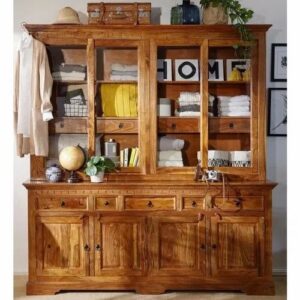
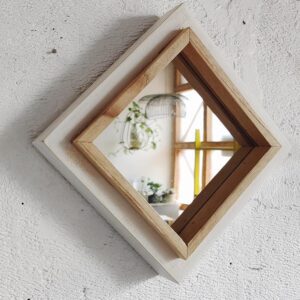
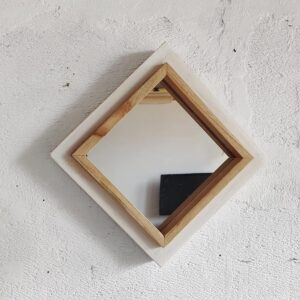




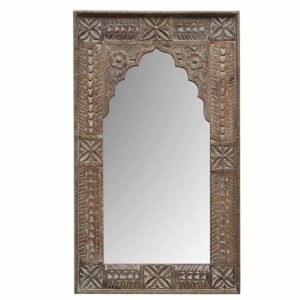
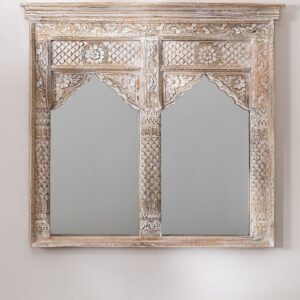
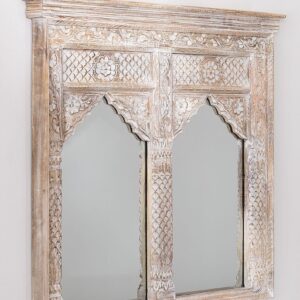
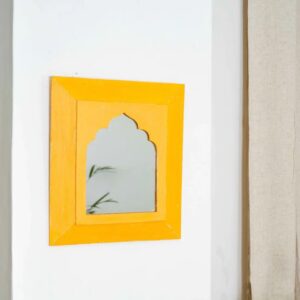

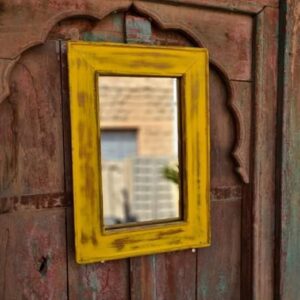
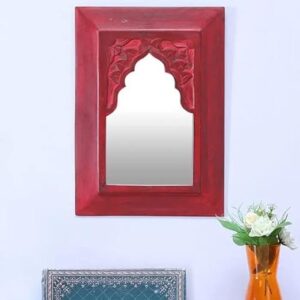

Reviews
There are no reviews yet.